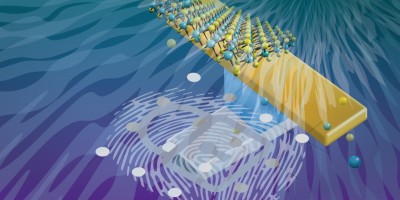Bioengineered platforms, intended to be used in the investigation of human health and disease, often incorporate cells of unknown ancestry or that lack diversity. To develop tools and platforms that benefit the entire human population, we must consider the ancestry of cells and intentionally diversify the cells we use in our designs.

References
Torres, J. B. & Colón, G. A. T. Racial experience as an alternative operationalization of race. Hum. Biol. 87, 306–312 (2015).
Gravlee, C. C. How race becomes biology: embodiment of social inequality. Am. J. Phys. Anthropol. 139, 47–57 (2009).
Borrell, L. N. et al. Race and genetic ancestry in medicine — a time for reckoning with racism. N. Engl. J. Med. 384, 474–480 (2021).
Mulligan, C. J. Systemic racism can get under our skin and into our genes. Am. J. Phys. Anthropol. 175, 399–405 (2021).
Brody, G. H., Miller, G. E., Yu, T., Beach, S. R. H. & Chen, E. Supportive family environments ameliorate the link between racial discrimination and epigenetic aging: a replication across two longitudinal cohorts. Psychol. Sci. 27, 530–541 (2016).
Brody, G. H., Yu, T., Miller, G. E. & Chen, E. Discrimination, racial identity, and cytokine levels among African-American adolescents. J. Adolesc. Health 56, 496–501 (2015).
Popejoy, A. B. et al. The clinical imperative for inclusivity: race, ethnicity, and ancestry (REA) in genomics. Hum. Mutat. 39, 1713–1720 (2018).
Zaaijer, S. & Capes-Davis, A. Ancestry matters: building inclusivity into preclinical study design. Cell 184, 2525–2531 (2021).
Bisogno, L. S. et al. Ancestry-dependent gene expression correlates with reprogramming to pluripotency and multiple dynamic biological processes. Sci. Adv. 6, eabc3851 (2020).
Ramamoorthy, A., Pacanowski, M. A., Bull, J. & Zhang, L. Racial/ethnic differences in drug disposition and response: review of recently approved drugs. Clin. Pharmacol. Ther. 97, 263–273 (2015).
Acknowledgements
The authors express gratitude to K. Stevens, A. N. Koppes and S. Lindström for helpful discussions and framing.
Author information
Authors and Affiliations
Corresponding author
Ethics declarations
Competing interests
The authors declare no competing interests.
Additional information
Peer review information
Nature Reviews Materials thanks Aylwyn Scally and the other, anonymous, reviewer(s) for their contribution to the peer review of this work.
Related links
Cellosaurus: https://web.expasy.org/cellosaurus/
Rights and permissions
About this article
Cite this article
Moore, E., Allen, J.B., Mulligan, C.J. et al. Ancestry of cells must be considered in bioengineering. Nat Rev Mater 7, 2–4 (2022). https://doi.org/10.1038/s41578-021-00397-7
Published:
Issue Date:
DOI: https://doi.org/10.1038/s41578-021-00397-7
- Springer Nature Limited
This article is cited by
-
Measuring and modelling tumour heterogeneity across scales
Nature Reviews Bioengineering (2023)
-
Control of the post-infarct immune microenvironment through biotherapeutic and biomaterial-based approaches
Drug Delivery and Translational Research (2023)


